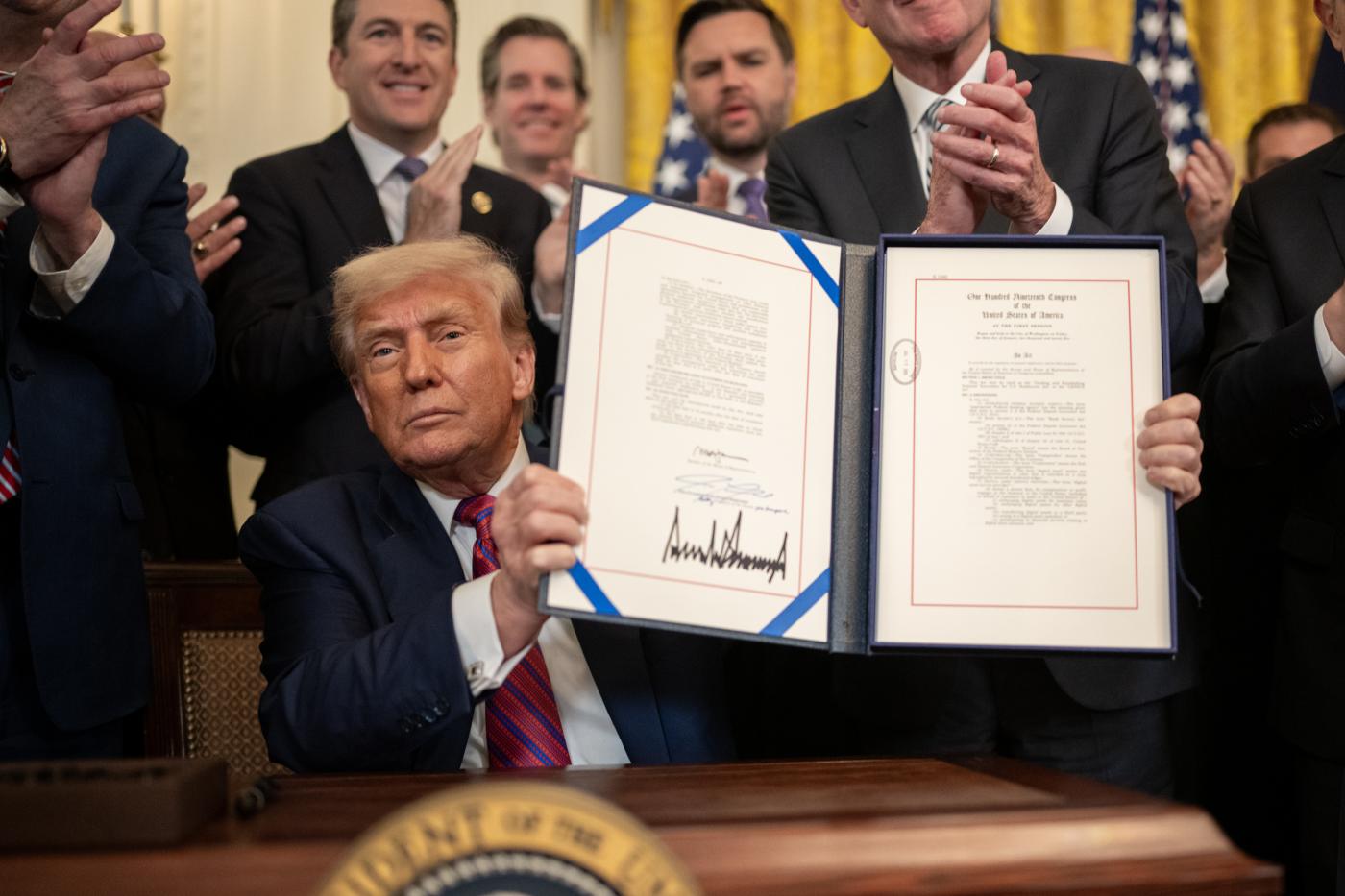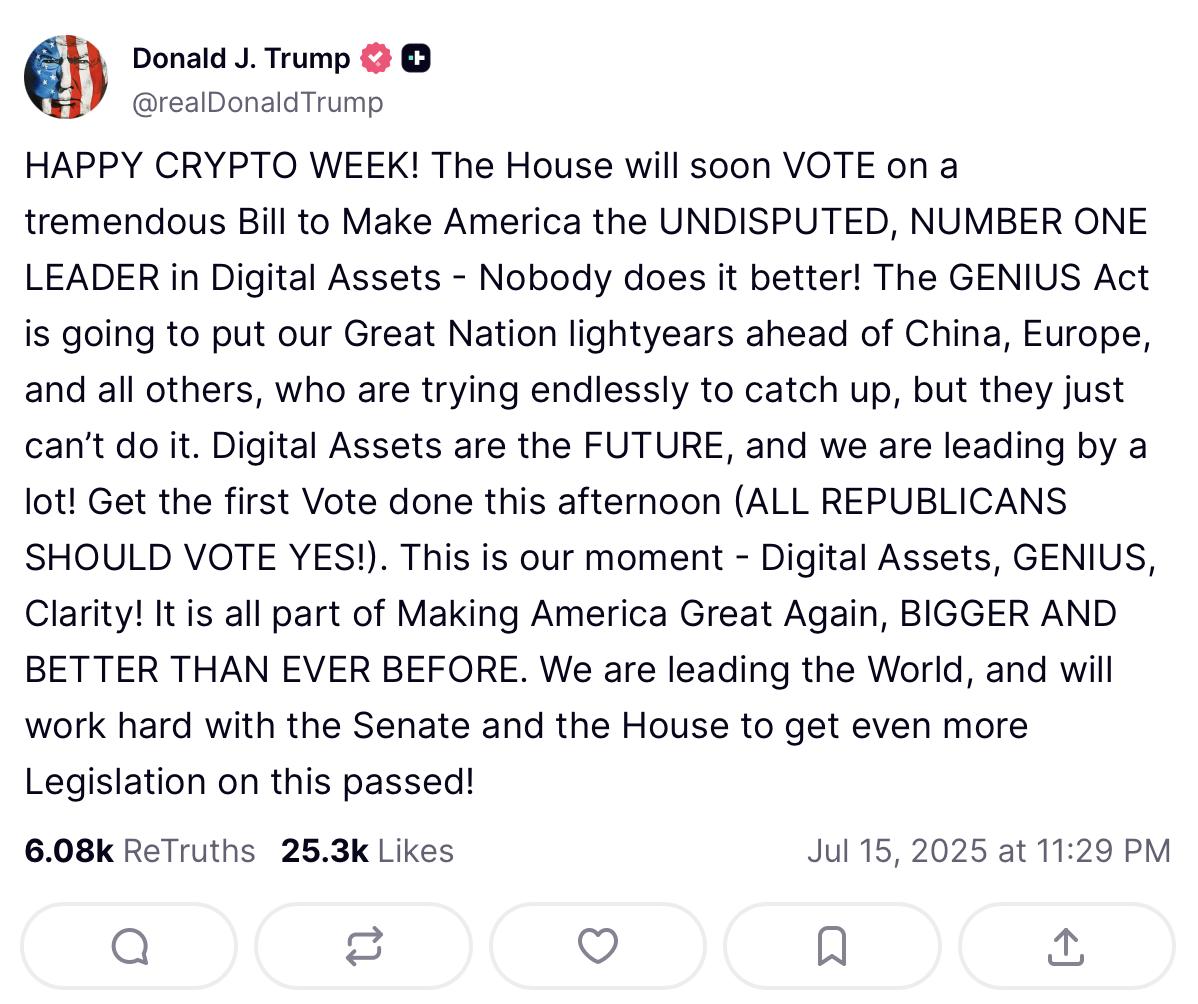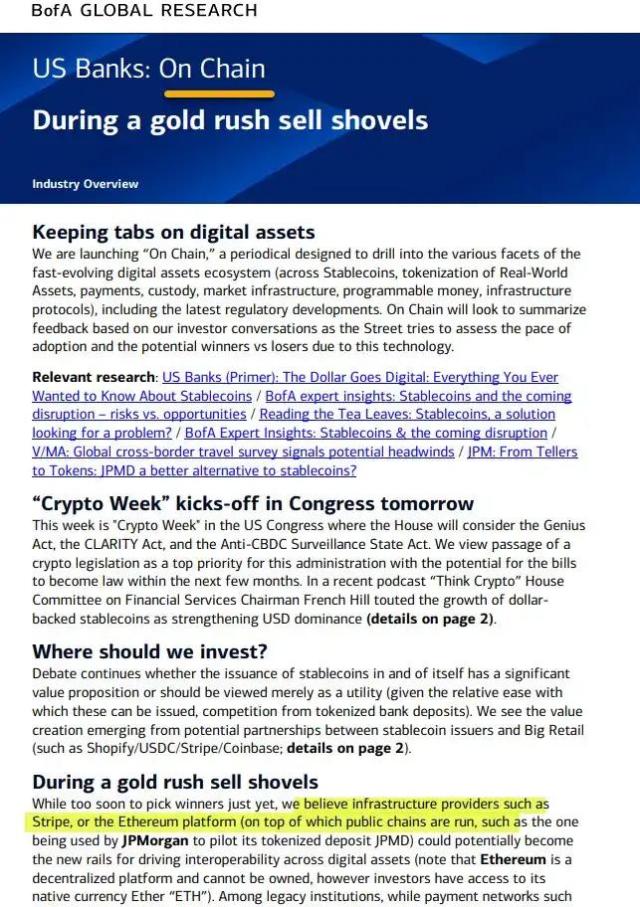Original | Odaily (Odaily Planet Daily) (@OdailyChina)
Author | Azuma (@azuma_eth)

On the morning of July 19th Beijing time, US President Trump officially signed the highly anticipated GENIUS Act in the East Room of the White House. This not only means that the bill, which will have a profound impact on the stablecoin industry's development, has completed all legislative procedures and become a law to be implemented; it also means that for the first time in modern history, a US President has signed a law focusing on cryptocurrencies, opening a new chapter in the industry.
To commemorate this historic moment, the White House invited executives from cryptocurrency industry companies including Robinhood, Tether, Gemini, and Multicoin to witness the signing of the GENIUS Act.
A Tumultuous Crypto Week
Earlier this week, the "Crypto Week" began on Capitol Hill, with the House of Representatives set to review three important Republican-led cryptocurrency bills - the GENIUS Act, the CLARITY Act, and the Anti-CBDC Act.
On the eve of the review, Trump had specially posted on Truth Social to build momentum for the three bills' passage and stated that he would work with the House and Senate to push through more related legislation. However, the review process did not go as smoothly as everyone expected.

In the early morning of July 16th Beijing time, the review process officially began, but the first procedural vote (not the final vote, but necessary to continue voting) ended in a failed 196-223 result. The main reason for the failure was that 12 conservative Republican representatives voted "no", with some arguing that the three bills should be bundled together and advanced as a package.
Subsequently, although Trump claimed to have met with most of the representatives who voted against, to persuade them to change their votes in the next procedural vote, the review process was temporarily stalled - Eleanor Terrett, a journalist who has long tracked cryptocurrency policy developments, even repeatedly used phrases like "chaotic", "still waiting", and "uncertain what will happen" to describe the situation at the time.
Finally, after 48 hours of internal negotiations, the review process was restarted. Although there was significant uncertainty in the process (the Anti-CBDC Act even had a record-breaking marathon vote lasting nearly 10 hours), the three bills were ultimately passed in the early morning of July 18th.
Among them, the core GENIUS Act passed the House with 308 votes in favor and 122 against, with a rare bipartisan consensus - over 100 Democrats defected to support the Senate-initiated bill, including House Minority Leader and New York Representative Hakeem Jeffries.
Additionally, the much-anticipated CLARITY Act was simultaneously passed with 294 to 134 votes, with 78 Democratic representatives voting in support of this market structure bill aimed at establishing a digital asset regulatory framework. Jeffries voted against this time, but key figures like former Speaker Nancy Pelosi chose to support.
The Anti-CBDC Act passed narrowly with 219 to 210 votes, with only two Democrats supporting this proposal to prohibit the Federal Reserve from issuing digital currency.
Since the GENIUS Act had already passed the Senate previously, with the House vote's passage, the bill will be directly submitted to the White House - as mentioned earlier, Trump waited almost no time and completed the bill signing the next day; the other two bills will be transferred to the Senate for the next round of review.
What Does the Signing of the GENIUS Act Mean for the Industry?
Regarding the GENIUS Act, the market has been hyping and promoting it for a long time, but many may not realize what it means for the market.
The full name of the GENIUS Act is the Guiding and Establishing National Innovation for US Stablecoins (GENIUS Act), which was jointly proposed on February 4th this year by US Senators Bill Hagerty, Tim Scott, Kirsten Gillibrand, and Cynthia Lummis, aiming to establish a legal framework for legally using stablecoins for payment within the United States.
(Note: The translation continues in the same manner for the rest of the text, maintaining the original formatting and translating all non-HTML content to English.)


